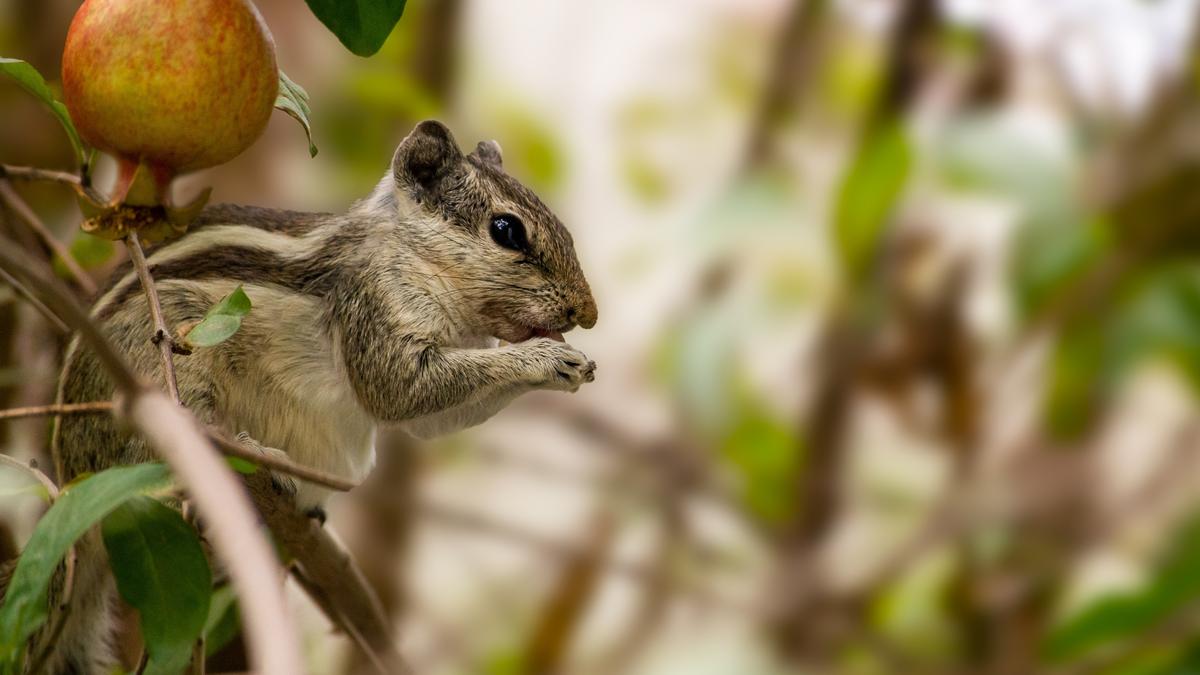What better validation for maintaining an organic garden than that of a dozen creatures feasting on the produce?
| Photo Credit: Getty Images/iStockphoto
At a time when dabbling with nature-oriented hobbies is hailed as a sustainable stress-buster, people have begun flaunting their green thumb. From low-budget kitchen gardens to expensively aesthetic greenhouses, cultivating some form of green life has not only become a popular pastime, but has also yielded significant results on personal health and mental well-being. And this well-being seems to be not only that of the human cultivators.
On a routine visit to our modest terrace garden, it became quickly apparent that the place was a crime scene. While the growbag of soil and the line of pots seemed exactly as left the previous day, a mark had been left on the large pot with a middle-aged pomegranate tree. There, hanging from one of its branches, shone a ripe fruit, the ruby-red seeds glistening on the side that the fruit had been chewed up. The perpetrator of the crime had scampered up another tree and sat regarding us with a twitching, bushy tail and displeased eyes.
The Case of the Stolen Fruit, although an open-and-shut one, was neither the first nor the last to be witnessed on the terrace garden. All perpetrators of these green crimes went unapprehended, owing to their sly, charming ways. That squirrel seemed to have inspired a legion of creatures of all sizes to demand what was rightfully theirs, and we humans continued cultivating the fruits of their choice. Not that we complained.
One another such routine inspection of the wooden frame on which the beans hung, the humorous parallel between the wildlife on large farmlands and that in little gardens amused me. Where massive elephants infiltrated vast fields of paddy, here the stray cat stalked a passing sunbird amid tiny shoots of microgreens. Where farmers had to take drastic measures to keep herbivores at bay, my troubles dealt with keeping the ginger cat and his mate off the flowerbed with hibiscus plants. Where the jackfruit trees on the field were ravaged by an elephant herd, here the pristine expanse of soil was messed up by the neighbourhood cat that wished to use the area as a natural bathroom.
Regardless of whether the cultivator owns two acres of land or two hundred, the local wildlife will never cease to grace us with their presence. They shouldn’t either.
At least in our kitchen gardens, where our livelihood does not necessarily depend on the yield, the house cats do lend a little personality to the green cover (when they aren’t defiling the greens), as do the boisterous sunbirds when they take a dip in the pot overflowing with water. As for the squirrel, the first role model to others of his kind, he continues to saunter into the garden and swipe the fruit of his choice, occasionally inviting the red-whiskered bulbuls along on Sundays for an organic brunch on the terrace.
What better validation for maintaining an organic garden than that of a dozen creatures feasting on the produce? While we harvest the tomatoes off the pot, we leave one on the plant for them. And as expected, it’s gone the next day. What do we humans get in return? A pollinator who ensures that the yield almost doubles the next month, and natural exterminators who rid the vines of intrusive larvae.
prn.scorpio1524@gmail.com
